Do you know how to cook dried fava beans (broad beans)? Let’s learn everything about them including how to soak, peel, cook and freeze them.
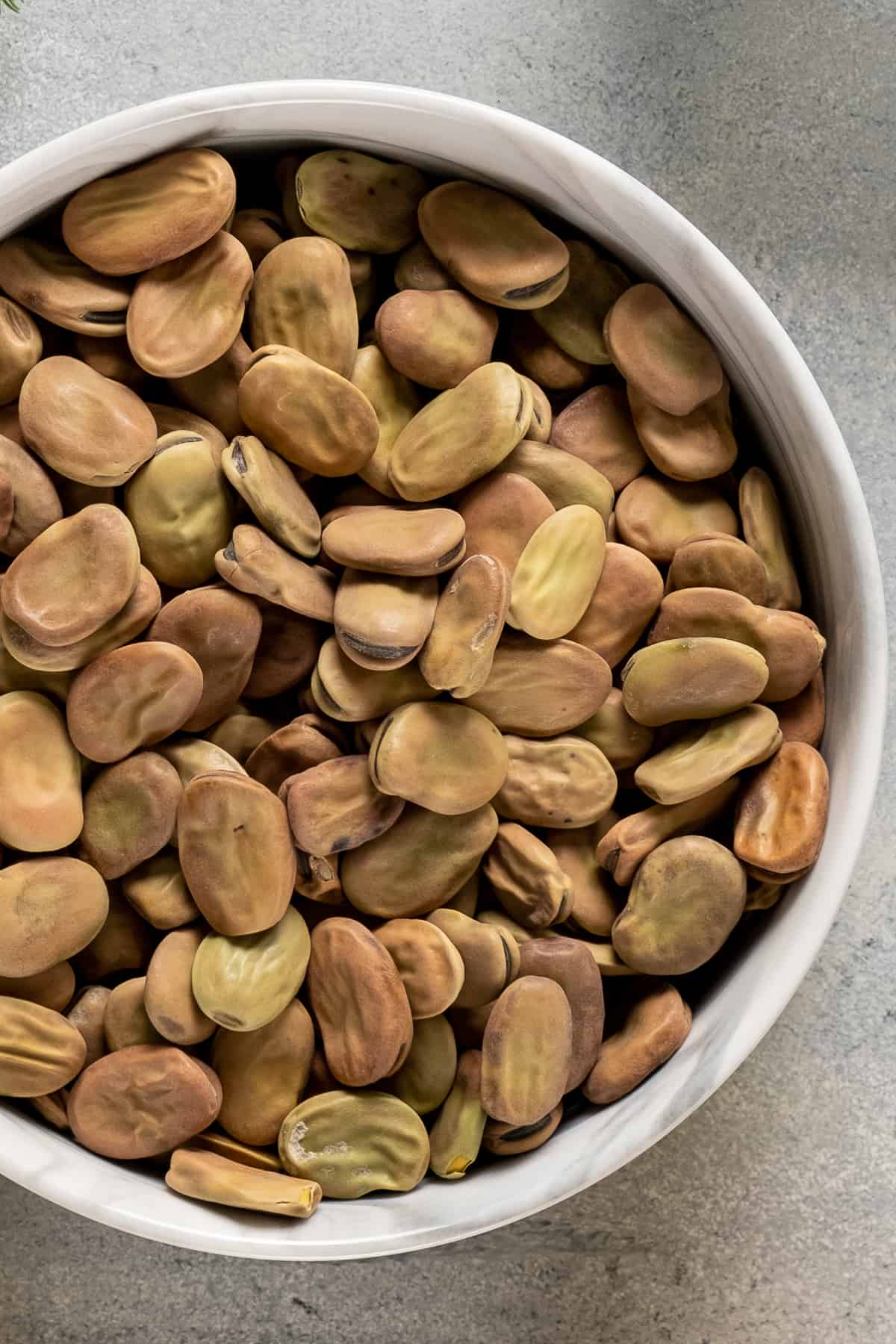
We talked about what fava beans are and how to cook fresh fava beans before and now is the time to learn the steps of preparing dry broad beans and cooking them. Then you can use this unique bean to make our tasty dried fava bean dip.
You can find fava beans fresh in spring but you can find them dried, canned and frozen all year long. No matter if they are fresh or dried, fava beans, aka broad beans are full of protein, fiber, potassium, and magnesium. And they have a unique buttery and earthy flavor. So you should include them in your everyday diet.
But first, know that there has to be some preparation before you can cook fava beans. In today’s post, we will show you the steps of how to shell and cook dried fava beans. We hope you find them helpful.
Do I Need To Shell Fava Beans?
Fresh broad beans are very special as their season is very short. Buy some once you see them at farmer's market. You can cook them whole when they are very young with soft and bright green pods and tiny beans inside them.
To prepare young whole fresh beans, you don’t need to remove the fava bean pod or shell the beans. Just cut off the ends and pull the thin string if there is any. As these are very young, they probably have no strings at all.
Then you can cut them into two or three. We always add some lemon juice on them before cooking. This will prevent them from turning into a blackish color. You can use them in soups or stews.
As the season gets close to end, it’s better to remove the beans inside pod because their pod gets inedible (bitter and tough). Also you had better peel those beans before cooking for the best result and this requires another step. Check out our how to cook fava beans post to learn more.
As for dried fava beans, they already come without pods but still have to be shelled. Their skin is really thick and chewy, so we don’t want them in our dish.
In conclusion, we need to shell both fresh and dried broad beans. The only exception is for young green favas that can be eaten with their pods.
What Are Dry Broad Beans?
Dry fava beans are a type of legume and can be found all year round. They are very popular in the Middle East. They are very much like chickpeas in terms of texture and taste when they are cooked.
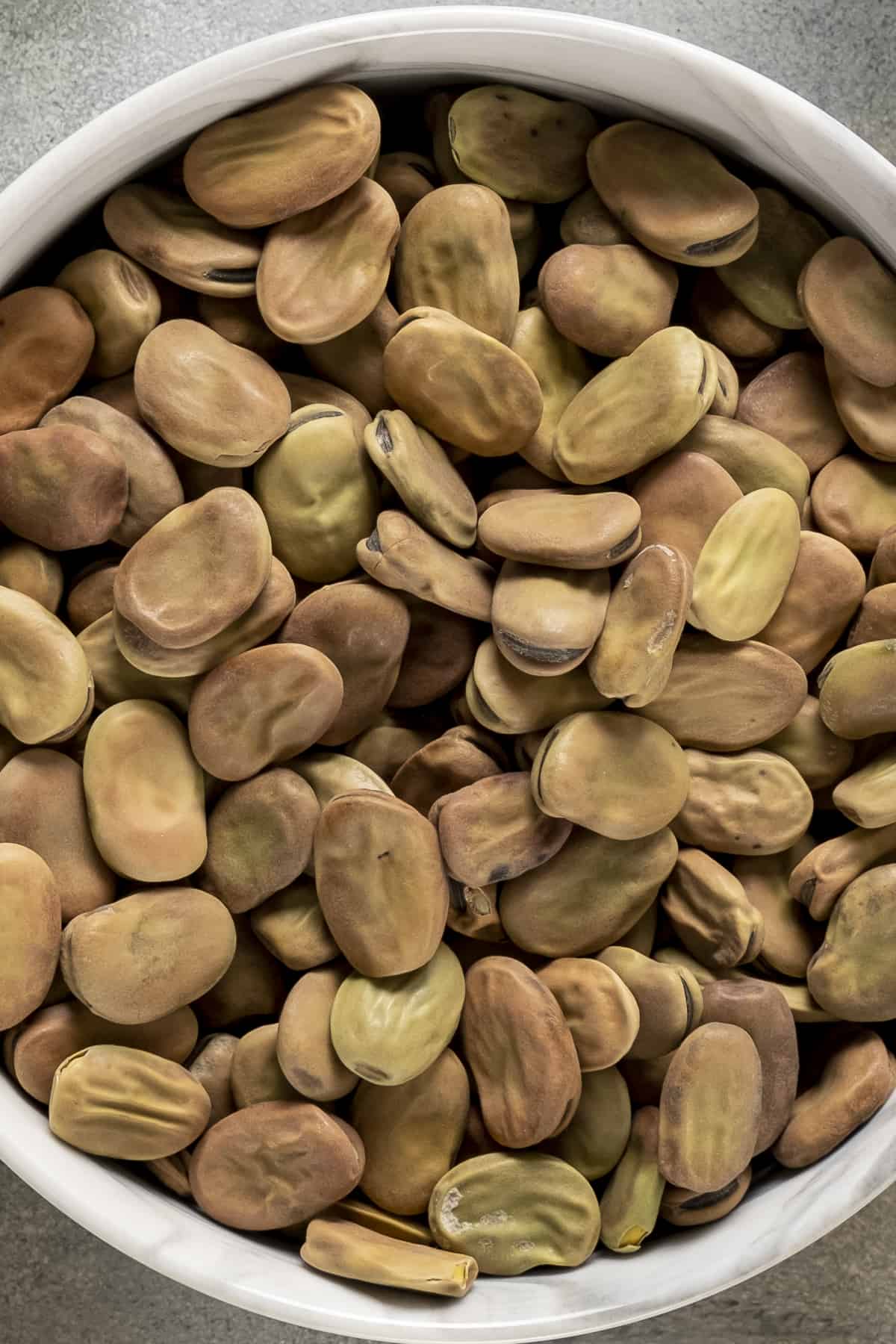
There are two types at the grocery stores: Split fava beans and whole dry fava beans. In this post, we will be talking about the second type.
Fava beans are podded, dried and then packed raw or cooked and canned. It is super easy to cook canned broad beans. But cooking dry favas from scratch requires some planning and effort. So let’s learn how to prepare dried fava beans for cooking.
How To Soak, Peel & Cook Them
We will be using 1 pound (450 g) dried beans here, which yields about 1 and ½ cups peeled beans.
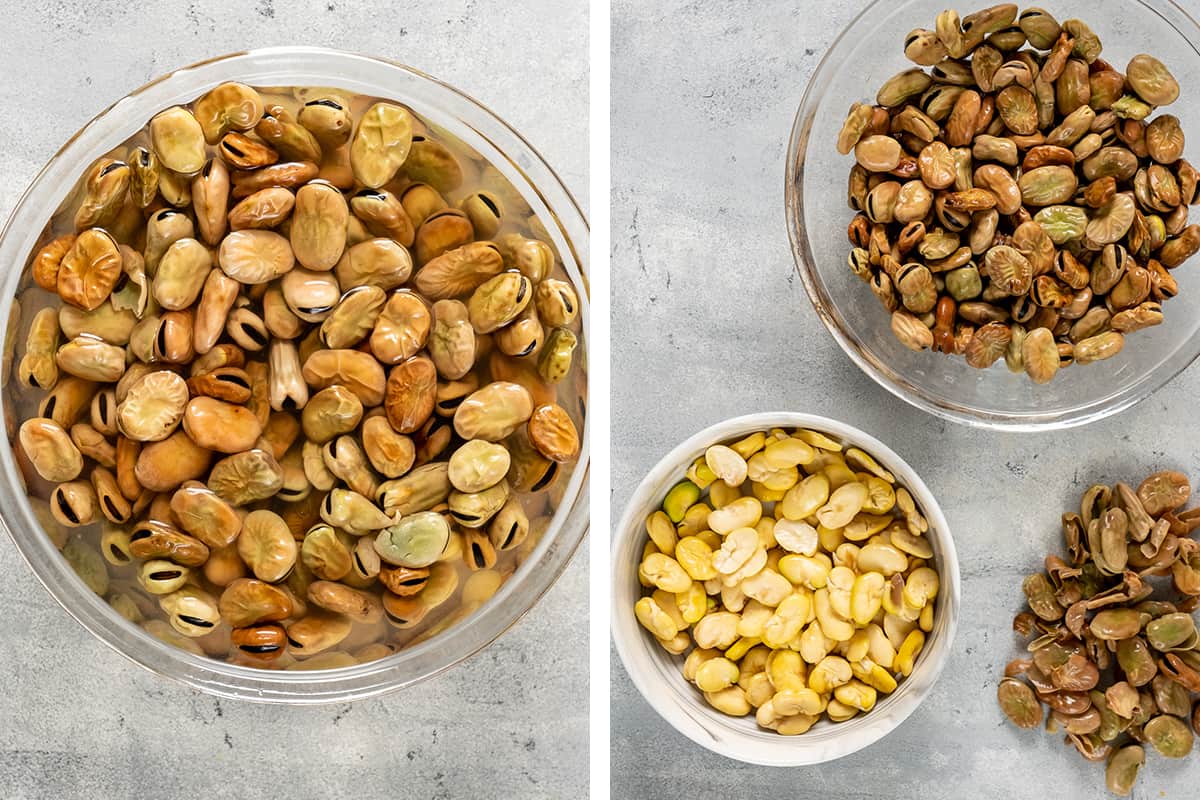
- Soak the beans overnight. This is a method used for all dried beans. Put the dry fava beans into a bowl and fill it with water. Let them sit at least 6-7 hours or overnight. After overnight soaking, you will see that the beans have absorbed moisture and got larger in size. This will help them cook quicker.
- Drain and rinse. After soaking the beans, drain and rinse them well. Discard the soaking water.
- Peel their skin. Pinch each bean with your thumb and forefinger, it will easily pop out of the skin. You can use your nail to start the peeling as you do when peeling fresh favas.
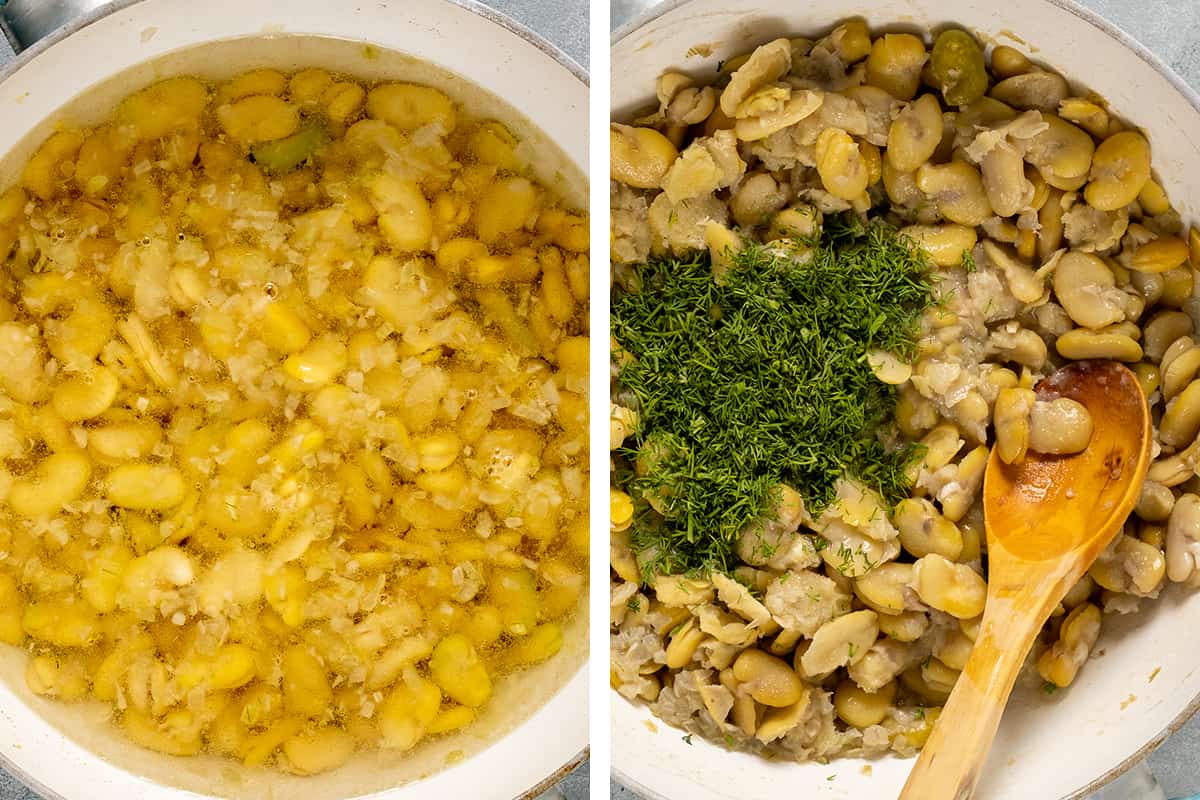
- Cook them. As they are not fully cooked, shelled beans require a cooking process now. Put them into a large pot. Fill the pot with water. You can use 7-8 cups of water for 1-2 cups of peeled beans. You can add salt and pepper and a few cloves of garlic just to enrich the flavor if you want. Bring it to a boil and let it simmer for 40-50 minutes or until tender. They should be tender but not mushy. Drain and let them cool.
- Use them in your cooking. Our favorite dish with them is dried fava bean dip, which is a classic in Egypt. You can also add them in soups, stews or pasta dishes.
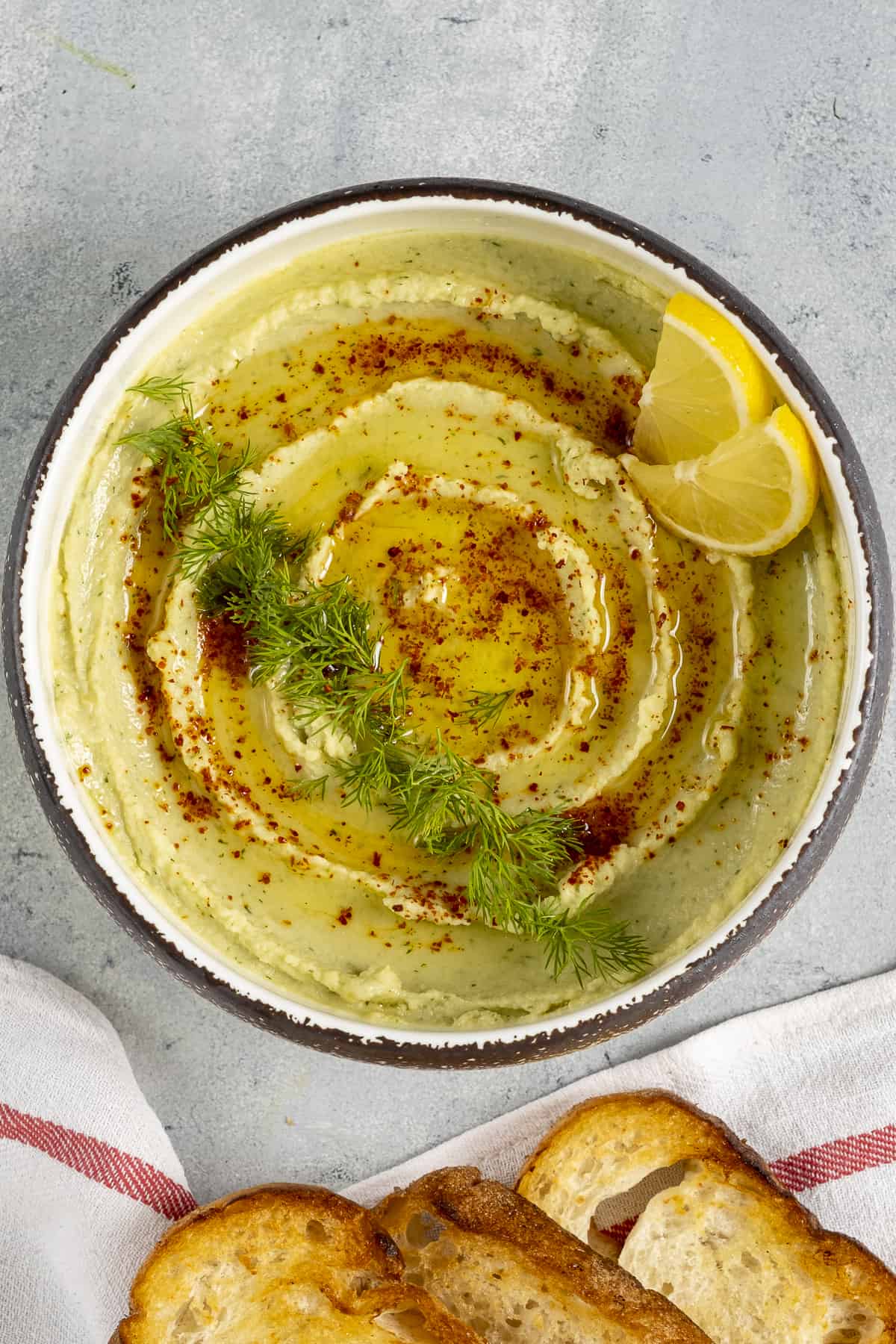
Tips
- If you buy canned fava beans, they are probably peeled and you won’t need the steps above. Just drain and rinse them and use in your cooking. If split dried fava beans are what you have, you should soak them in the same way described above, but don’t need the peeling step. Split fava beans are already peeled, so they are a great time saver.
- Quick soaking method: If you don’t have time for overnight soaking, you can use this method. But it still requires about 1 hour. Put the beans into a pot and fill it with water, covering by 6-7 inches of water. Bring them to a boil, let simmer for 5 minutes and remove from the heat. Let them sit covered for 1 hour.
Storage
You can store shelled dried fava beans in the fridge for up to a week or freeze them for up to 6 months. Make sure that they cool completely.
To freeze the cooked dry broad beans, resealable freezer bags are the best. You can measure 1 or 2 cups of beans in each bag. When ready to use, thaw them in hot water and then use in recipes.
Usage
- Make a fava dip, which is very much like hummus.
- Add them in your salads like piyaz or black-eyed pea salad.
- Throw them in lentil soup.
- Add them in your rice pilaf or bulgur pilaf.
- Make fava bean stew called ful medames.
FAQs
You can use lima beans as a substitute. Although they are not the same, they have similarities in terms of texture and look.
You can use white beans or chickpeas as a substitute.
Other Bean Recipes
You might also like:
As always: If you make this recipe, let us know what you think by rating it and leaving a comment below. And post a pic on Instagram too—tag @give_recipe so we can see!
Sign up for the FREE GiveRecipe Newsletter to get the new recipes into your inbox! And stay in touch with us on Facebook, Pinterest, YouTube and Instagram for all the latest updates.
📖 Recipe
Dried Fava Beans - How To Peel & Cook
Cooking dried fava beans require a few easy steps. You will have the best creamy and buttery texture when cooked after this preparation.
- Prep Time: 20 minutes
- Cook Time: 10 minutes
- Total Time: 30 minutes
- Yield: 4 1x
- Category: Side Dish
- Method: Blanching
- Cuisine: American
Ingredients
- 1 pound (450 g) dried fava beans
Instructions
- Put the dry fava beans into a large bowl or pot and fill it with water. Let them sit at least 6-7 hours or overnight.
- After soaking the beans, drain and rinse them well. Discard the soaking water.
- Pinch each bean with your thumb and forefinger, it will easily pop out of the skin. You can use your nail to start the peeling as you do when peeling fresh favas.
- Put them back into the pot. Fill the pot with water. You can use 7-8 cups of water for 1-2 cups of peeled beans. Bring it to a boil and let it simmer for 40-50 minutes or until tender. They should be tender but not mushy. Drain and let them cool.
- Use them in your cooking.
Notes
- Quick soaking method: If you don’t have time for overnight soaking, you can use this method. But it still requires about 1 hour. Put the beans into a pot and fill it with water, covering by 6-7 inches of water. Bring them to a boil, let simmer for 5 minutes and remove from the heat. Let them sit covered for 1 hour. And continue with the steps after soaking.
- If you buy canned fava beans, they are probably peeled and you won’t need the steps above. Just drain and rinse them and use in your cooking.
- If split dried fava beans are what you have, you should soak them in the same way described above, but don’t need the peeling step. Split fava beans are already peeled, so they are a great time saver.
- You can store cooked dried fava beans in the fridge for up to a week or freeze them for up to 6 months. Make sure that they cool completely. To freeze the beans, resealable freezer bags are the best. You can measure 1 or 2 cups of beans in each bag. When ready to use, thaw them in hot water and then use in recipes.
Nutrition
- Serving Size:
- Calories: 3094
- Sugar: 51.7 g
- Sodium: 117.9 mg
- Fat: 13.9 g
- Carbohydrates: 528.8 g
- Fiber: 226.8 g
- Protein: 237 g
- Cholesterol: 0 mg


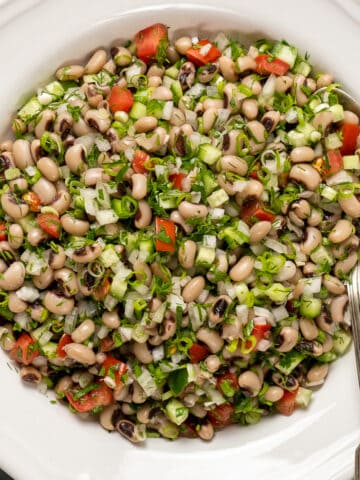
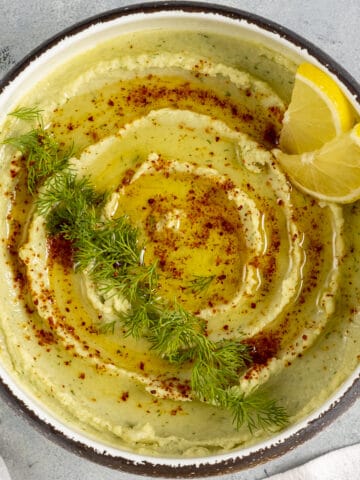
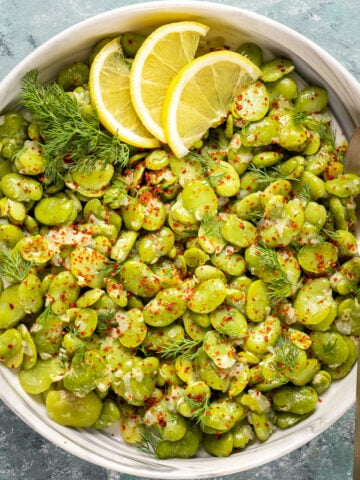
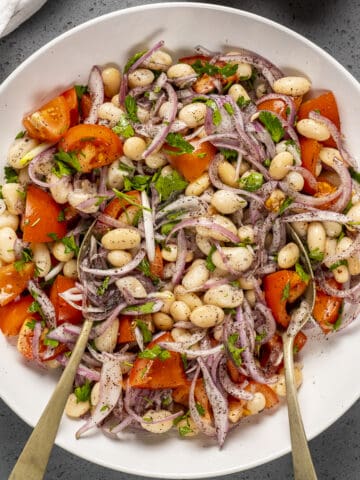
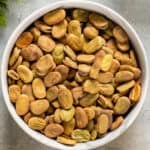
Keith E Stewart says
Wonderful, easy to follow, and concise instructions. I'm looking forward to springtime planting and all that promises! Thank you for creating a fork in the road.
Zerrin & Yusuf says
Hi Keith,
Glad you like it:) Fava beans are our favorite spring veggie. Would love to hear what you think when you try it.